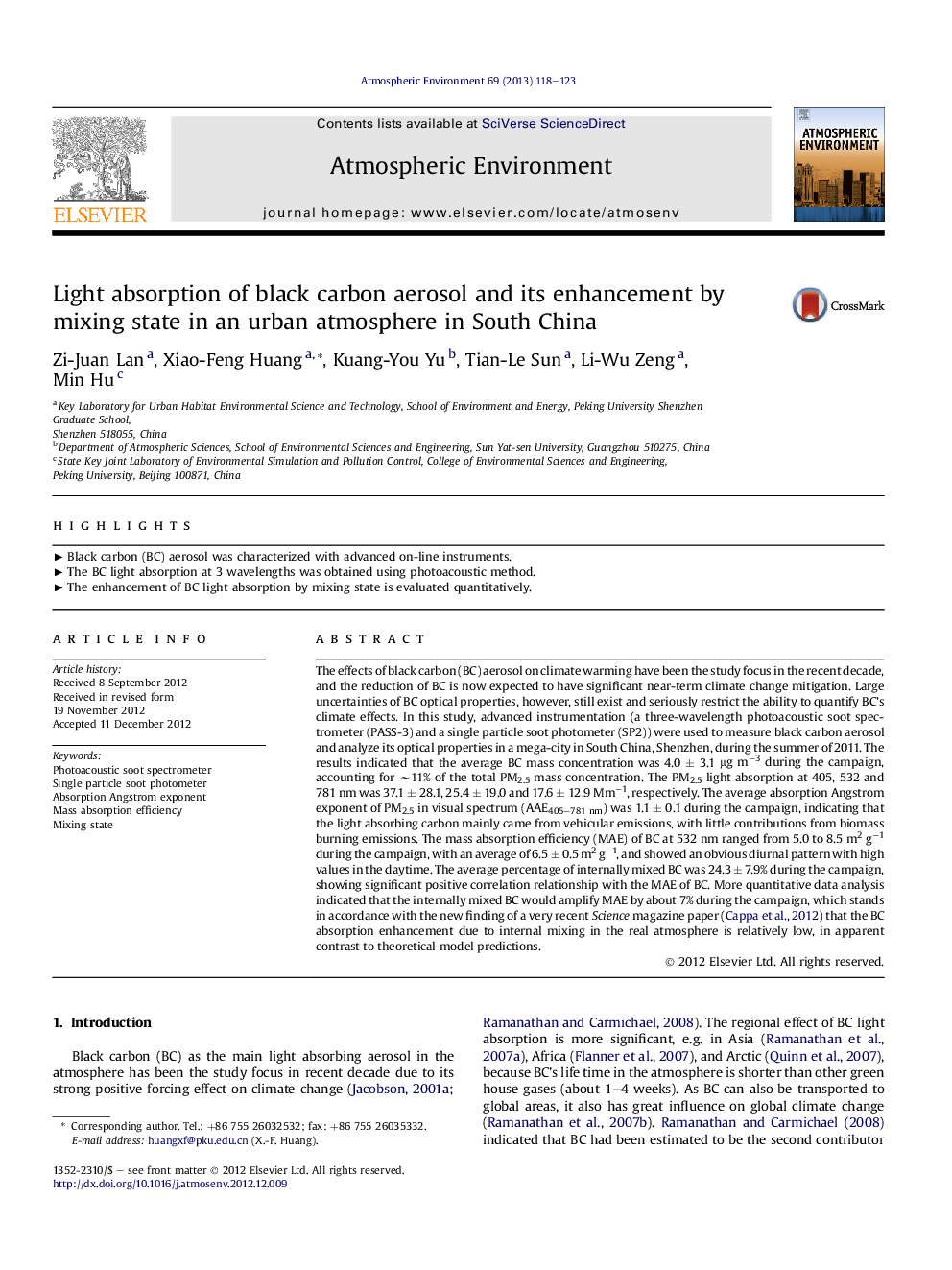| Article ID | Journal | Published Year | Pages | File Type |
|---|---|---|---|---|
| 4438366 | Atmospheric Environment | 2013 | 6 Pages |
The effects of black carbon (BC) aerosol on climate warming have been the study focus in the recent decade, and the reduction of BC is now expected to have significant near-term climate change mitigation. Large uncertainties of BC optical properties, however, still exist and seriously restrict the ability to quantify BC's climate effects. In this study, advanced instrumentation (a three-wavelength photoacoustic soot spectrometer (PASS-3) and a single particle soot photometer (SP2)) were used to measure black carbon aerosol and analyze its optical properties in a mega-city in South China, Shenzhen, during the summer of 2011. The results indicated that the average BC mass concentration was 4.0 ± 3.1 μg m−3 during the campaign, accounting for ∼11% of the total PM2.5 mass concentration. The PM2.5 light absorption at 405, 532 and 781 nm was 37.1 ± 28.1, 25.4 ± 19.0 and 17.6 ± 12.9 Mm−1, respectively. The average absorption Angstrom exponent of PM2.5 in visual spectrum (AAE405–781 nm) was 1.1 ± 0.1 during the campaign, indicating that the light absorbing carbon mainly came from vehicular emissions, with little contributions from biomass burning emissions. The mass absorption efficiency (MAE) of BC at 532 nm ranged from 5.0 to 8.5 m2 g−1 during the campaign, with an average of 6.5 ± 0.5 m2 g−1, and showed an obvious diurnal pattern with high values in the daytime. The average percentage of internally mixed BC was 24.3 ± 7.9% during the campaign, showing significant positive correlation relationship with the MAE of BC. More quantitative data analysis indicated that the internally mixed BC would amplify MAE by about 7% during the campaign, which stands in accordance with the new finding of a very recent Science magazine paper ( Cappa et al., 2012) that the BC absorption enhancement due to internal mixing in the real atmosphere is relatively low, in apparent contrast to theoretical model predictions.
► Black carbon (BC) aerosol was characterized with advanced on-line instruments. ► The BC light absorption at 3 wavelengths was obtained using photoacoustic method. ► The enhancement of BC light absorption by mixing state is evaluated quantitatively.
